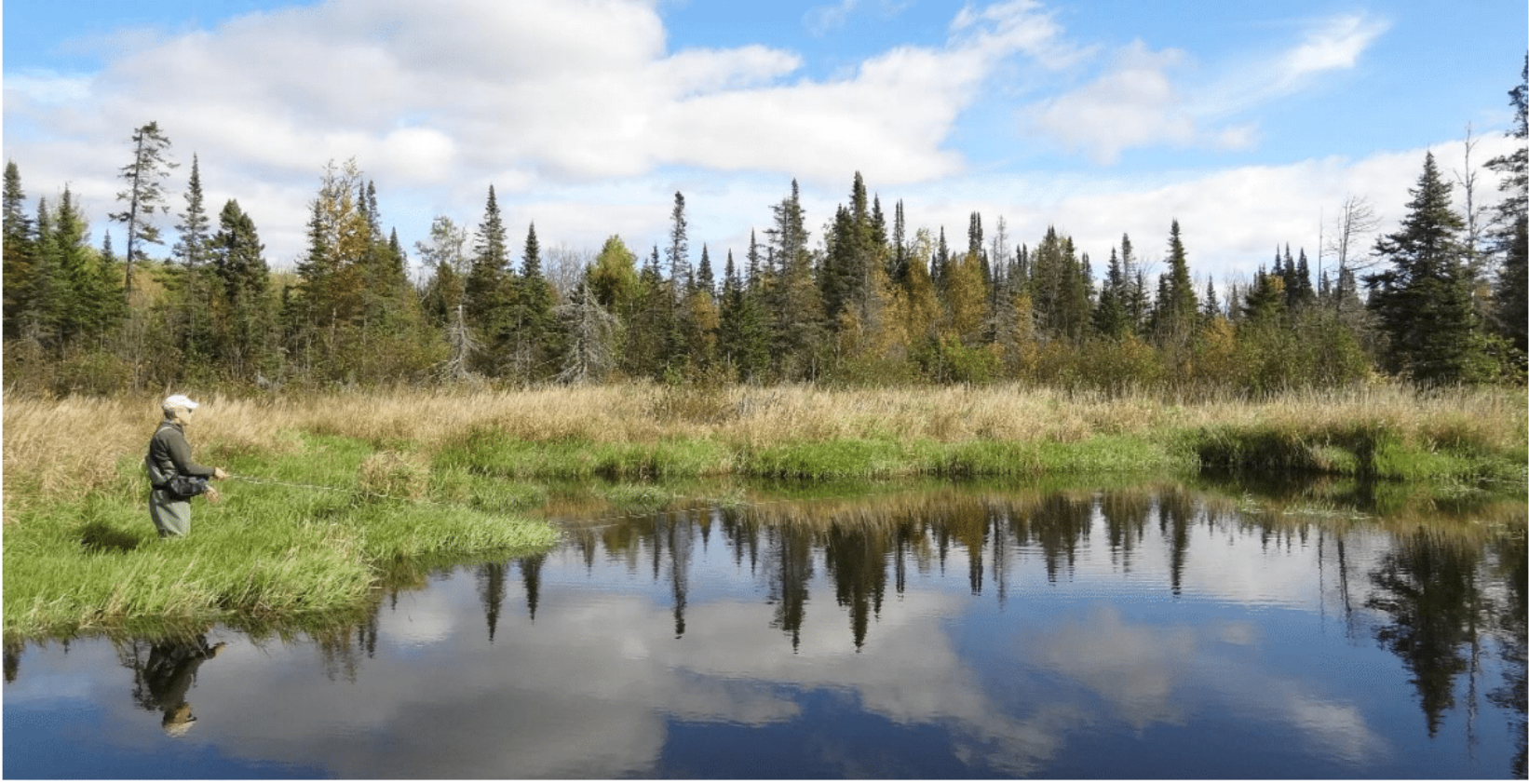
4 Things to Know when Fly Fishing Beaver Ponds

What is there not to love about fly fishing in beaver ponds?! These hybrid trout habitats offer the angler the best of both worlds with their numerous ponds tied together by a series of braided streams. Beavers typically build their homes and dams off the beaten path which means dumb unpressured fish and little to no competition for the angler. If you are feeling the itch to fish during runoff this late Spring, bring up google maps on your phone to find some beaver ponds and keep these 4 points in mind as you prepare for some of the best fishing of the year!
- “One Fish, Two Fish, Red Fish, Blue Fish” – what I’m trying to illustrate with this Dr. Seuss reference is the diversity and abundance of fish that beaver ponds hold! No, you most likely won’t be finding red or blue fish in beaver ponds, but you will typically find amazing concentrations of fish, and hopefully even some absolute lunkers lurking in the depths! For context, there is a 4-mile-long chain of beaver ponds an hour west of Denver, and my best fishing day there saw 127 trout in the net! If you are looking for numbers, relatively dumb aggressive fish, and the shot at a couple monster trout, find yourself a beaver pond!
- Little Flies, Streamers, & Dries – Midges and chironomids are going to be the dominant food source in this silty, nutrient rich environment. Leeches, small crayfish, and wooly buggers are a more active offering for large, calorie hungry trout. Dry flies true to alpine meadows and woodlands will also be on the menu, so be sure to fill your box with beetles, large caddisflies, ants, mosquitos, a variety of mayflies (callibaetis, blue winged olives, red quills, and grey drakes), and some tantalizing attractors to round out your offering.
- Current, Cruisers, & Cover – There are three primary hot spots where you are going to find fish in beaver ponds and their connecting streams. The first spot is you will always find fish in areas with current. Trout will consistently be facing up into the streams entering and leaving the beaver ponds as they enjoy the fresh highly oxygenated water and constant flow of food arriving in the drift. Be sure to lead with your fly before you approach or cross these small channels or tail outs of the numerous pools for the best chance at a strike before spooking an unseen fish. You will also find a good number of cruising fish moving through the slack water of the pool in search or freshly emerging or recently landed insects. Make sure to get your cast well ahead of these fish and use light leaders so as not to spook them when your fly lands. The final spot you are going to want to target is deep water adjacent to cover. Strip your streamers between the logs and branches around beaver lodges and on the upstream side of beaver dams. The largest trout in these pools love to hunker in the pockets and shadows of these structures and ambush passing bait, so be ready for hard strikes and quick hooksets!
- Watch your Step – while the fishing can be phenomenal in beaver ponds, it doesn’t come without some perils so you need to be mindful of where you step. Keep an eye out for the sharpened ends of beaver chewed willows that can tear your waders close to the waterline. While the ponds may appear shallow, looks can be deceiving. What may at first glance may look like a 1’ deep pool in actuality is just the shallow covering and additional 3’ of soft sediment and muck that will grab the legs and suck off the boots of an unwary angler. Finally, beavers often carve multiple cuts and slides between their ponds which can be hidden by overgrown grass and foliage, so take your time and watch your step as you navigate these waters.
FOM
Hippy Stomper
Color: Chartreuse/Royal


